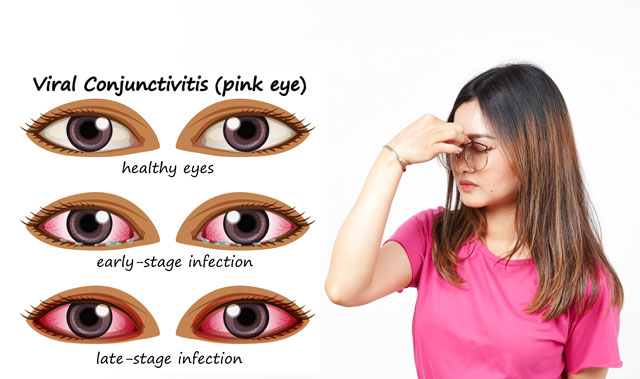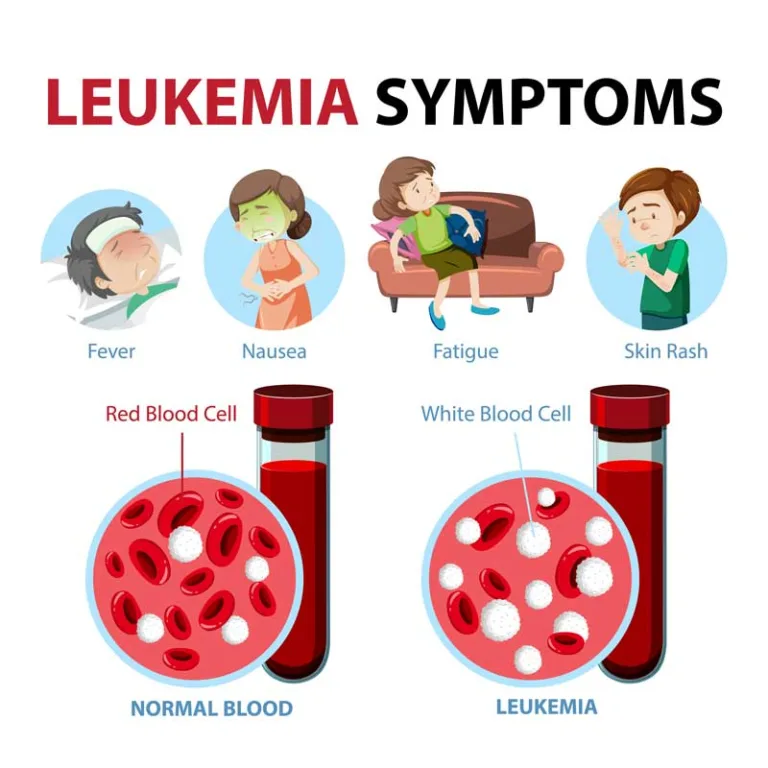Commonly misdiagnosed as pink eye, also known as conjunctivitis, it is an infection or inflammation of the thin, clear layer of tissue that covers the white part of your eyes and lines the inside of your eyelids. This tissue is called the conjunctiva, and when it becomes infected or irritated, it can make your eyes look red or pink, which is why it’s called pink eye.
The intricate nature of pink eye lies in its propensity for misdiagnosis. Numerous eye conditions present overlapping symptoms, creating confusion and challenges in implementing appropriate treatments. The repercussions of misdiagnosis extend beyond delayed care, as the misidentification of infectious forms of pink eye raises concerns regarding potential transmission within communities.
However, it is imperative to recognize that there are other conditions that can manifest similar symptoms. Thus, this article delves into the intricacies of pink eye, shedding light on the obstacles surrounding accurate diagnoses.

Let’s understand this pink eye infection before diving in:
How can you get Pink eye?
When it comes to pink eye, also known as conjunctivitis, it is an inflammation of the conjunctiva, which is the thin, transparent layer that covers the white part of your eye and the inside of your eyelids. You can get pink eye when bacteria, viruses, or irritants come into contact with your eye.
Here are some common ways you might get it:
- Bacterial Infection: When harmful bacteria get into your eye, it can cause an infection that leads to pink eye. This can happen by touching your eyes with dirty hands or sharing items like towels or makeup with someone who has pink eye.Viral Infection: Similar to the common cold, pink eye can be caused by viruses that spread through coughing or sneezing or by touching a surface or person with the virus and then touching your eyes.
- Allergies: Sometimes, pink eye can be triggered by allergies to things like pollen, pet dander, or dust mites. This is called allergic conjunctivitis.
- Irritants: Exposure to irritants like smoke, chemicals, or chlorine in swimming pools can also cause pink eye.
To prevent pink eye, it’s essential to practice good hygiene, wash your hands frequently, avoid touching your eyes, and avoid sharing personal items like towels, pillowcases, and makeup.
Commonly Misdiagnosed Eye Conditions
When it comes to our precious eyesight, accurate diagnosis is of the utmost importance. However, there are several eye conditions that are commonly misdiagnosed, leading to delayed treatment and potential complications. Let’s read about these frequently misunderstood eye conditions to empower you with knowledge to ensure early detection and proper management.
1. Eye Allergies
Eye allergies exhibit several symptoms akin to pink eye, including ocular redness, itching, and excessive lacrimation. Nonetheless, differentiating between the two conditions requires a discerning eye. Pink eye typically involves the presence of discharge and crust formation, while eye allergies are often characterized by persistent itching and ocular irritation. Effective management of eye allergies necessitates identifying allergens triggering the symptoms and adopting preventive measures such as allergen avoidance, utilization of lubricating eye drops, and seeking professional guidance if necessary.
2. Viral and Bacterial Conjunctivitis
Viral and bacterial conjunctivitis are infections that can mirror the symptoms of pink eye. While pink eye can be caused by both viral and bacterial agents, distinctions exist in their manifestations. Viral conjunctivitis frequently begins in one eye and spreads to the other, accompanied by watery discharge. Conversely, bacterial conjunctivitis often presents with thicker discharge and may induce crusting. An accurate diagnosis is pivotal in determining the appropriate course of treatment, which may involve antiviral or antibiotic medications.
3. Dry Eye Syndrome
A chronic disorder characterized by inadequate tear production or subpar tear quality is known as dry eye syndrome. It can induce ocular redness, irritation, and a sensation akin to having foreign particles in the eyes, which are also common symptoms associated with pink eye. However, dry eye syndrome typically lacks the presence of discharge and crust formation observed in pink eye cases. Managing dry eye syndrome necessitates employing artificial tears, adhering to proper eye hygiene practices, and addressing underlying factors such as hormonal changes or medication side effects.
4. Contact Lens-Related Issues
Wearing contact lenses introduces certain risks, including complications that can be misdiagnosed as pink eye. Conditions such as corneal abrasions, contact lens-induced dry eye, and giant papillary conjunctivitis can produce symptoms similar to pink eye. Maintaining appropriate contact lens hygiene, including regular cleaning and disinfection, refraining from extended wear, and adhering to recommended lens replacement schedules, can mitigate these complications. Persistent or worsening symptoms warrant prompt consultation with an eye care professional for evaluation and guidance.
5. Blepharitis
Blepharitis is a condition where the eyelids become inflamed, causing them to appear red, swollen, and crusty. It’s like having irritated and itchy eyelids. Sometimes it can make your eyes feel sticky and uncomfortable. People might mistake it for an eye infection, but it’s not contagious. Proper eyelid hygiene and warm compresses can help ease the symptoms.
6. Iritis
Iritis is when the colored part of your eye (the iris) becomes inflamed, making your eye look red and causing discomfort. It can make your eyes sensitive to light and might feel like a mild ache or pain.
7. Glaucoma
Glaucoma is a condition where the pressure inside your eye becomes too high, which can damage your optic nerve and lead to vision loss. It’s like having increased pressure inside the eye that slowly affects your sight. Glaucoma can progress without obvious symptoms, so regular eye check-ups are crucial for early detection and management. If left untreated, it can cause permanent vision impairment or blindness.
8. Corneal Abrasion
Corneal abrasion is a scratch or scrape on the clear front part of your eye called the cornea. It’s like having a tiny cut on your eye’s surface. This can cause discomfort, redness, and sensitivity to light. It may feel as if something is stuck in your eye. Though most corneal abrasions heal on their own, it’s essential to avoid rubbing your eyes and seek medical attention to prevent infection and ensure proper healing.
9. Uveitis
Uveitis is an inflammation of the middle layer of your eye, known as the uvea. It’s like having swelling inside your eye. This condition can make your eye red, cause pain, and blur your vision. Sometimes, it’s linked to other health issues. If you experience these symptoms or notice changes in your vision, it’s essential to see an eye doctor promptly. Early diagnosis and treatment are crucial to preventing complications and preserving your eye health.
10. Episcleritis
Episcleritis is an inflammation of the thin layer that covers the white part of your eye, called the episclera. It’s like having mild irritation or redness on the surface of your eye. Episcleritis can cause discomfort, but it’s usually not severe. It might feel like there’s something in your eye. The condition often improves on its own, but if you’re concerned or the symptoms persist, consulting an eye doctor is advisable to rule out any underlying issues and get appropriate care.
How to Distinguish Pink Eye from Other Conditions
1. Key Differentiating Factors
While pink eye commonly presents with ocular redness, discharge, and discomfort, other states may exhibit distinct symptom profiles. For instance, eye allergies may be accompanied by sneezing and nasal congestion, while extended screen time or environmental factors may exacerbate dry eye syndrome. By recognizing these unique indicators, individuals can gain insights into the underlying condition and seek appropriate treatment.
- Look for Red and Swollen eyes. Pink eye often causes the white part of your eyes and inner eyelids to become red and swollen. If you notice this redness and puffiness, it might be pink eye.
- Check for Eye Discharge: Pink eye can cause your eyes to produce a watery or thick discharge. This discharge might make your eyes feel sticky or crusty, especially when you wake up in the morning.
- Watch for Itching and Grittiness: If you experience itching or a feeling like there’s sand or grit in your eyes, it could be a sign of pink eye.
- Pay Attention to Light Sensitivity: Pink eye may make your eyes sensitive to light. If bright lights bother your eyes more than usual, it could be a symptom of pink eye.
- Examine Both Eyes: Pink eye often affects both eyes, but it can start in one eye and spread to the other. So, check if both of your eyes are showing similar symptoms.
- Consider Your Health History: If you recently had a cold or flu, or if someone close to you had pink eye, there’s a higher chance it might be pink eye, as it can be contagious.
- Check the Color of the eye discharge. If the eye discharge is yellow or greenish, it could indicate a bacterial infection, which is common in pink eye. If it’s clear and watery, it may suggest a viral infection.
2. Seeking Professional Diagnosis
While self-assessment may provide preliminary indications, consulting an eye care professional is essential for an accurate diagnosis. Eye care professionals possess the expertise and employ specialized tools to conduct comprehensive examinations, perform requisite tests, and determine the precise cause of symptoms. Prompt and accurate diagnosis facilitates effective treatment and mitigates potential complications.
Conclusion
Accurate assessment of pink eye and its differentiation from other ocular conditions plays a crucial role in ensuring appropriate treatment and averting unnecessary discomfort. By comprehending the frequently misdiagnosed pink eye conditions, recognizing pivotal factors that set them apart, and seeking the expertise of professionals when needed, individuals can confidently navigate their ocular well-being.
Keep in mind that your eyes warrant the care and guidance of experts, so do not hesitate to consult an eye care specialist if any concerns or uncertainties arise. Recall that precise diagnosis is the cornerstone of effective management when it comes to preserving ocular health.
Tips
- Explore exercises: Incorporating regular exercise into your routine is vital for maintaining a lifetime of wellness. Engage in activities that suit your preferences and fitness level, such as cardiovascular workouts, strength training, or yoga.
- Harness the power of sleep meditation: Practice effective sleep meditation techniques to improve the quality of your sleep. Explore different mindfulness and relaxation exercises that can help calm your mind and promote restful sleep.
- Embrace morning meditation for beginners: Starting your day with a meditation practice can set a positive tone for the rest of the day. Begin with beginner-friendly morning meditation techniques to cultivate mindfulness, clarity, and a sense of calm.
By incorporating these tips into your lifestyle, you can unlock the secrets to a lifetime of wellness.
Frequently Asked Questions
Q: What are pink eyes?
Pink eye, also known as conjunctivitis, is an eye condition characterized by inflammation and redness of the conjunctiva, the thin, clear tissue that lines the inside of the eyelid and covers the white part of the eye. Pink eyes can be caused by viral or bacterial infections, allergies, or irritants.
Q: What are the symptoms of pink eyes?
Common symptoms of pink eyes include redness in the whites of the eyes, an itching or burning sensation, excessive tearing, a gritty feeling in the eyes, swollen eyelids, increased sensitivity to light, and a thick, yellowish, or greenish discharge from the eyes.
Q. How is pink eye transmitted?
Pink eye can be transmitted through direct contact with an infected person’s eye secretions, such as tears or discharge, or by touching surfaces contaminated with the infectious agents. It can also spread through respiratory droplets when an infected person coughs or sneezes.
Q. What is the treatment for pink eyes?
The treatment for pink eyes depends on the cause. For viral conjunctivitis, which is the most common type, treatment typically involves managing the symptoms with artificial tears, cold compresses, and over-the-counter pain relievers. Bacterial conjunctivitis may require antibiotic eye drops or ointments. Allergic conjunctivitis can be treated with antihistamine eye drops or medications. It’s important to consult a healthcare professional for an accurate diagnosis and appropriate treatment.
Q: How can I prevent pink eyes?
To reduce the risk of contracting pink eye, it’s important to practice good hygiene. Wash your hands frequently with soap and water, especially after touching your eyes or face, and avoid touching or rubbing your eyes. Avoid sharing personal items like towels, cosmetics, or contact lenses. If you have pink eyes, avoid close contact with others and refrain from touching your eyes to prevent spreading the infection.
Q: Are there any complications associated with pink eyes?
In most cases, pink eyes resolve without any long-term complications. However, certain forms of conjunctivitis, particularly if left untreated, can lead to more severe complications such as corneal ulcers, inflammation of the eyelids (blepharitis), or even vision problems. It’s important to seek medical attention if you experience persistent or worsening symptoms.
Q: When should I seek medical help for pink eyes?
It is advisable to seek medical help if you experience severe eye pain, significant vision changes, sensitivity to light, a high fever, or if your symptoms worsen or persist for more than a few days. Additionally, if you wear contact lenses and develop symptoms of pink eyes, it’s important to consult an eye care professional for proper evaluation and guidance.
Q: Can pink eye be prevented through vaccinations?
There are no specific vaccines available to prevent pink eye. However, some vaccines, such as the one for the flu (influenza), can help prevent certain types of viral conjunctivitis that may occur as a result of respiratory infections. It’s important to consult with a healthcare professional regarding vaccinations and preventive measures for various eye conditions.
Q: Can pink eyes affect both eyes?
Yes, pink eyes can affect both eyes. Depending on the cause, pink eyes can start in one eye and then spread to the other, or both eyes may become affected simultaneously. It’s important to avoid touching or rubbing the eyes, as this can contribute to the spread of infection from one eye to the other.
Q: Can pink eyes be caused by allergies?
Yes, pink eyes can be caused by allergies. Allergic conjunctivitis is a common type of pink eye that occurs due to exposure to allergens such as pollen, dust mites, pet dander, or certain chemicals. It can cause itching, redness, and watery discharge. Avoiding allergens and using over-the-counter or prescribed antihistamine eye drops can help alleviate symptoms associated with allergic pink eyes.






